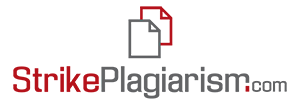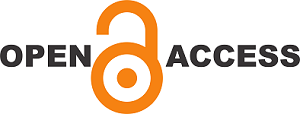
List of accompanying documents:
WARNING! Items 1-5 in the information about the author must be completed in Ukrainian, Russian and English;
Articles are published in Ukrainian. Publications of works by foreign authors are available in English.
Only unpublished articles are accepted for printing.
The text of the article must be submitted in electronic form. The file must be created in the Word editor and stored in doc, docx, or rtf formats.
The policy of editorial office has been changed due to the war with Russia. Temporarily scientific journal does not accept articles that contain Russian materials - persons, events, creativity, music.
STRUCTURE OF PUBLICATION
UDC (Classification Index of Universal Decimal Classification).
International Individual Scientific Number — ORCID iD (registration on the site https://orcid.org/signin).
Names and initiatives of author (authors) of article.
Title of the article. The title of the article should be short (up to ten words) and correspond to its contents. The title should avoid the phrase “Investigation of the issue…”, “Some questions…”, “To the problem…”, “To the question…”. Abbreviations in the title are not allowed.
Abstract. Volume — 150–250 words.
Keywords: 3–7 words or phrases. The keywords can not be considered as surnames. Correct: creativity (activity) of M. Lysenko; wrong: M. Lysenko.
Text of article. Volume (without the list of used literature and sources, annotations and keywords) — 20000–40000 characters with spaces.
Structure of the basic part of article must be complied with the requirements of the Ministry of Education of Ukraine (Bulletin of the Higher Attestation Commission of Ukraine, 2003 No. 1):
Problem to solve in general and its connection with important scientific or practical tasks.
An analysis of the latest research and publications, which concern the issues and the author takes them into consideration, with allocation of previously unsolved parts of the general problem, which is devoted to the article.
Formulating the purpose of the article (statement of the task).
Presentation of the main research material with full justification of the received scientific results.
Conclusions from the proposed research and perspectives of further exploration in the indicated direction.
The names in the article should be written with initials (with a name and patronymic) before the name (for example: M. V. Lysenko). Names of little-known foreign artists, their titles must be written in Ukrainian and (in brackets) in the original language.
The dates in the text are indicated by the numbers.
Ordinal numerals and numbers (up to ten) in the text must be written in words.
Use the hyphen (-) and dash (—) correctly. The first sign coexists in a complex word, and therefore without spaces (for example, socio-cultural), the second — between words, and therefore with intervals. Short dash (–) is used to indicate the range (without spaces): 1920–1980, pp. 10–25.
Abbreviations must be deciphered after the first mention in the text.
The footers are so-called typographic: «», inside the quotations: “”.
Intersecting space (keyboard shortcut — Ctrl + Shift + space) put between initials and last name (B. M. Lyatoshynskyy, Viktor Kosenko), number and word, which it concerns (20th century, 235 pp., S. 12–25), in generally accepted abbreviations (and so on, etc.).
Specific musical terms are to write in the original (staccato, rubato, diminuendo) and highlight it in italics. Tones (in C major, S minor, F in major) and sounds are to write in Cyrillic and highlight it in italics. Serial numbers of symphonies, concerts, sonatas are to write in words.
Footnotes — at the bottom of the page. Footnote numbering is a post-recipe. Apply Footnote function in Word. The sign of the footnote (Arabic numerals with the upper index) put before the comma or dot, but after the question marks, the exclamation, three points.
Illustrations and tables. Note examples (typed in a music editor) and illustrations, must be included in the article as well as be send as separate files in TIFF or JPG formats. Each illustration (a table, a musical example, a scheme, a picture, a photo, etc.) should have the title and serial number, which has a reference in the text of the article. Do not combine the name of the drawing with the illustration itself in one graphic file. Tables should be done only in Microsoft Word Editor.
Reference. The quoted work is indicated in the footnotes at the bottom of the page, indicating the surname with the initials of the author (s) of the work, his full name, place of publication, publishing house, year of publication, page number of the quotation. In the references to the article on the collection of scientific works, a dictionary or encyclopedia, it is necessary to indicate the author’s surname and initials, the title of the used article, giving a description of the collection (directory, encyclopedia) in which it was published, with all the original data, as well as the page number from which the quotation was take. If quoting correspondence indicates only the quoted (mentioned) letter it is necessary to indicate the addressee and sender, the time of writing, as well as the collection (in which the letter is published) with all the initial data. If there is a referring to a multi-volume publication it necessary to indicate not only the number of the used one, but also the total number of volumes. In the description of the dissertation or the abstract of the dissertation work it is necessary to indicate the cipher and the name of the specialty and the institution in which the defense took place. References to sources from the Internet (use only those materials that are published exclusively in electronic form and do not have a printed version) are accompanied by the title of the publication with the indication of its author. It is not recommended to refer to electronic resources of an informal and non-scientific nature, as well as textbooks and popular science literature. If in the text of the article there is a reference to the name of the scientist — his publication should be on the list of used literature and sources.
List of used literature and sources. All sources and used literature should be written in the original language, alphabetically: initially Cyrillic, then Latin. The list must be completed in accordance with DSTU 8302: 2015 “National Standard of Ukraine. Information and documentation. Bibliographic references. General terms and conditions to apply” (http://lib.pu.if.ua/files/dstu-8302-2015.pdf). To write the reference using only the quoted and mentioned works. In the description of the monograph (dissertation, abstract) indicate the total number of pages, and in the description of the article the pages (from first to last) only the article or letter used. Do not reduce the names of books, collections of articles, periodicals.
References — List of used literature and sources in English with all transliterated [in square brackets] in the Roman alphabet (for Ukrainian-language works — http://ukrlit.org/transliteratsiia, for Russian — http://translit.net/) titles (articles, monographs, a book, a collection of articles, a journal, a dissertation, a dissertation…) and publishing houses. References are recommended to be issued according to Harvard international standard Arrange according to Harvard International Standard: List of used literature and sources translated into English. Transliteration [in square brackets] in the Roman alphabet (for Ukrainian-language works — http://ukrlit.org/transliteratsiia, for Russian-speaking — http://translit.net/) all names (articles, monographs, books, collections of articles, magazine, dissertation, abstract…). The names of publishers are only transliterated, not translated into English. Foreign language works (in French, German, Polish…) also translate into English, in square brackets indicate the original titles (books, articles, dissertations, collections of articles, magazines, newspapers…). At the and of each position, indicate the language of the original.
Surname and initials of the author (authors), title of the article, annotations and keywords in another two languages in another language (in Russian) — similar to the annotations at the beginning of the article.
Summary must be in English including 2000–3000 characters with spaces. It is necessary to specify (to categorized): relevance of the study; main objective (s) of the study; methodology — to indicate how certain methods have been applied, that is, to disclose the research mechanism itself — how the results were achieved (how the study was done); scientific novelty; main results and findings of the study as well as a conclusion to understand the significance for art, science, education, etc. Also, to submit an identical annotation in Ukrainian (Russian).
Information about the author (authors) of publication: surname, name, patronymic, scientific degree, academic rank, place of work, position — in Ukrainian (Russian) and English languages.
Contact phone and electronic address of the author of the publication.
Authors who do not have a scientific degree, add an extract from the minutes of the meeting at the Chair on the recommendation of the article to the press and a review of the Doctor of Sciences (17.00.03 Music Art, or 26.00.01 Theory and History of Culture), sealed with the seal of the institution.
For the authenticity of facts, quotes, own names and references only the authors of the publications are responsible.
Articles that do not meet the specified requirements will not be considered. If the plagiarism is detected, the article is not subject to re-submission.
The authors of the publications are responsible for the reliability of facts, quotations, own names and references.


